Clay used to be one of the main options for plastering the house. Its use in construction was commonplace, as evidenced by old houses in all parts of the country. Although there are a lot of new materials, clay has returned in more user-friendly modern forms in the offerings of construction companies. Its qualities are recognised by architects and builders, who recommend it to keep the atmosphere in the home pleasant and healthy. Not long ago we were talking about Gulia house, built by Litarh, where the architect had recommended that the owners finish the walls with clay-based plaster mainly for its insulating capacity in summer. Ioana and Ciprian Radu used Conluto plaster fromNaturalpaint. Find out why clay is a healthy option below.
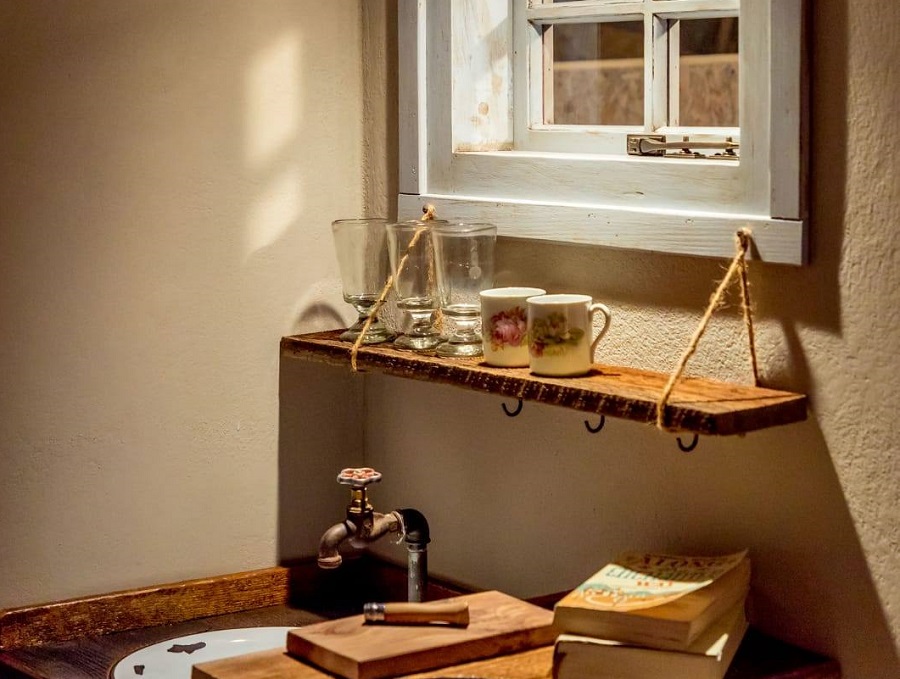
How clay was used in the past for plastering and building houses
Clay or clay is a very fine sedimentary rock made of silicate, quartz and mica. Other materials and impurities occur in its composition, depending on the area where it is found. The balance between the components determines the quality of the clay. People discovered this impermeable material on river banks and started using it in house construction. Working with it, they saw that it could be used both in the actual construction of the walls and in the floor, ceiling or plastering. Animal excrement and straw were sometimes mixed in to increase its strength.
I spent my childhood and holidays in the countryside, on the banks of the Ialomita river, so I had the opportunity to see my mother preparing clay to glue on the floor in the living room (odăița, as we called it). From time to time, she would peel the old layers of lime off the walls and glue them with clay, then she would glaze them again. This usually happened before Easter, and on holidays the house smelled clean and fresh. When he was getting ready for such an action he would get yellow earth (clay) brought by wagon from the gully and send me to collect horse manure from the road or from those who had horses. I would ask her why I couldn't use cow manure, it was easier to find. She'd tell me it was no good because it had no straw.
When he had everything he needed, he started preparing the clay. He would lay the clay out just like you would lay flour for kneading - a pile with a hole in the middle. There he would put the horse manure and water and start mixing with the hoe. When it got a thick consistency we would start kneading it with our feet until it became a consistent and homogeneous mixture. For years I wondered what the point of that dung was. Chemistry later helped me understand. It was casein, present in those droppings, which becomes a very strong natural adhesive. And now casein glue is used for restoration work.
Also in the countryside I saw how to make a straw house. The wooden structure of the walls was reinforced and filled with lumps of clay. Then the walls were straightened and plastered with a softer clay than the one used for brickwork. The last layer was even softer and so the walls became very smooth. In such houses it was cool in summer and warm in winter, there was no condensation and mould on the walls and in winter the air was never dry. And all this simple country people knew by instinct.
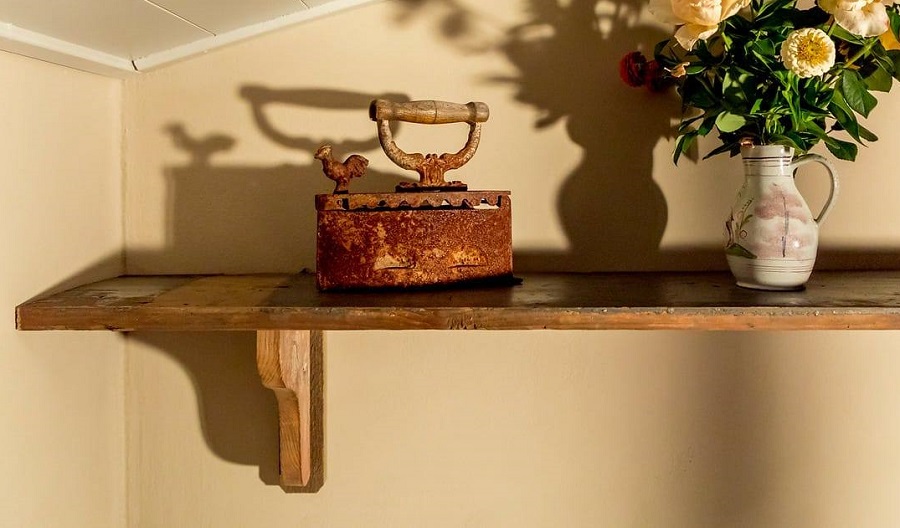
What are the advantages of clay-based plasters in modern times
The clay has returned and everything that was known from instinct and the experience of the forefathers is now supported by serious scientific studies. We now know that clay prevents the proliferation of microbes and pathogenic bacteria and that its antiseptic action has been known since ancient Egyptian times when it was used in mummifications. But this is not the only property that makes clay a healthy material for the home. Here are some of them:
Clay plaster creates a healthy environment in the home. It is an open plaster that allows walls to absorb moisture from the air when it is too high and release it when it is too low. This keeps the relative humidity inside the home in the 45-55% range, which is perfect for our needs. The minerals in clay have the ability to bind pollutants in the air, reducing odours, toxicity and dust. It also has the ability to reduce bacteria and prevent their growth which contributes to a healthy and comfortable living environment. These properties make finishing walls with clay recommended for those with respiratory diseases or allergies.
Clay is a very good insulator. Clay plaster helps to keep warm in winter and cool in summer. Walls finished in this way have good capillary conduction properties, which means they can effectively absorb and disperse moisture. With its high natural mass, clay plaster can absorb and retain heat, gradually releasing it as the air temperature in the room drops. The same high natural mass also makes clay a very good natural sound insulator.
Behaves as a vapour barrier allowing moisture to escape and thus preventing condensation. Removing moisture from wet processes used in house construction is very important, especially for wood used in construction. By letting the moisture out, it does not turn into condensation and so mould will not form and eventually lead to wood rot.
No chemical additives and natural drying. Drying of clay plasters happens, as in the past, by simply letting the water out of the mixture. There are no chemical reactions that can lead to the appearance of health-damaging compounds. Everything is natural and healthy. It is the perfect material for children's and elderly people's rooms.
Conluto plasters from Naturalpaint
Now plastering walls doesn't take as much work as it did when I was a child. Nor do we need to add other components to increase its adhesion or strength. Just mix it with water and the clay is ready to apply, with all the characteristics and advantages of yesteryear.
Naturalpaint supplies such clay plasters, already used by many beneficiaries for their projects. We have written about some of them. House of Miroslava, Kurt's house in Vișagu or House on wheels made in Ghelnița are beautiful stories, but also examples of people who have chosen to live in healthy environments and to use as many natural materials as possible when building and finishing their or their clients' homes.
Conluto plaster is delivered wet. Two coats should be applied for a pleasing wall appearance: a coarser base coat and a thinner top coat. It is applied diluted in the proportion of 10-15% with water. The dilution depends on the application method used, the substrate and the thickness of the coat applied. If the wall is straight (generally in new construction), a single coat of 1 cm thick rough plaster is applied. In old buildings, where the brick layer can be eaten away, 2 coats are applied, the first being necessary for levelling. Coarse plaster can be applied on wood fibre boards, masonry, light agglomerate, reed.
Fine plaster is applied over coarse plaster in a single layer, no thicker than 4 mm. It can also be applied to plasterboard provided that Conluto primer is used to ensure adhesion. Naturalpaint's specialists are at your disposal for information about application on other types of substrates.
Clay is a great choice for those who prefer a natural and healthy lifestyle. It is the perfect choice for homes where sensitive people, people with respiratory illnesses or allergies live and for children's or elderly people's rooms. And if we want to know how we'll feel in a home like this, all we have to do is remember our grandparents' home, with its fresh, clean basil smell. Or imagine.
source photos: Jota Manufaktur

















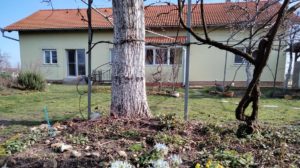

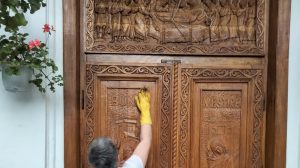
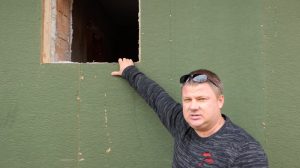
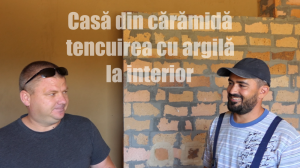

Add comment